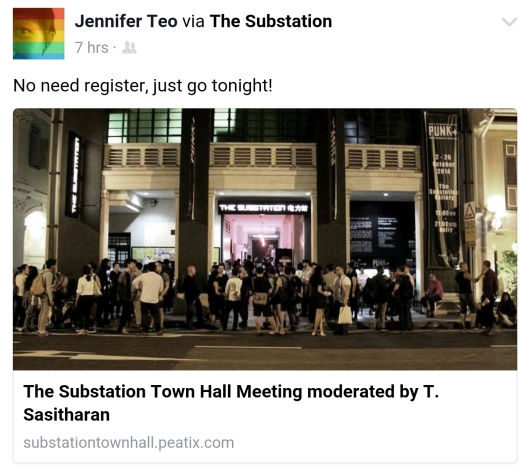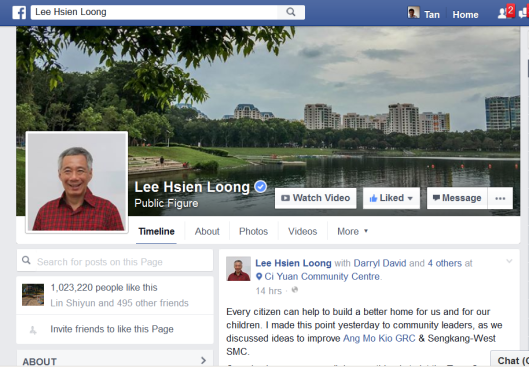Wrote the following in December last year in response to the concerns Zai Kuning and others about possible staff and policy changes at The Substation. It might be relevant to the Townhall chaired by Sasi:

“Substation staff and what happens to them. My view is that the boss has the final say about who to keep and in what form as long as it is fair and follows good practice. For instance, you can ask people to go, but you need to do so with due process: adequate reason, a system of feedback so people have the chance to improve, compensation for time served. And if it unfair then the arts community should be concerned because we care about everyone who work with us. This is an important matter. I don’t know the facts of the case as it stands whether what is happening now was done properly. But I trust the Board Of Directors in this, and I do trust it will do the right thing if they found out that things had not been done properly.
The more difficult question is whether the arts community in general should have any specific say in what happens in and to The Substation in terms of its artistic side? That is, does The Substation belong to itself (and is hence accountable to only to its board, its funders, its staff and the people it works with). Or does it also belong to Singapore and the arts community (in which case, it is also accountable to all of us artists and Singaporeans in general). In other words, is The Substation like any arts group which can do what it likes within the demands of its direct stakeholders (most arts groups belong to this category), or is it special and belongs to everyone (like Singapore Art Museum of The National Gallery and other public institutions)? Of course, The Substation is administratively configured to be like any arts group, unlike the public institutions such as the two museums. Nevertheless, it seems to be more than any arts group. I am not sure my position on this, and it also depends on the answer to the next question.
Another question is does The Substation see itself as belonging to everyone or just itself. Pao Kun, it seems to me, ran The Substation like it belonged to everyone. The first part of what he said in the following suggests that: “The Substation should be anything anyone wants it to be: Open and flexible enough to do things his or her own way.” That is, a shared aim or aims negotiated with the whole community but (this is necessary) autonomy in how to realise it. I think Sasi too agreed with this. And under Weng (and Audrey) too, who definitely involved everyone, not just the artists but also academics and activists, in the programming. I am not sure about Effendy. Neither am I about Alan’s position.
So many of us were transformed by The Substation. We all (rightly or wrongly) want to make a claim on it, not just of its past but also of its present and future. We care. We also make a claim on just on its programming but also its spaces (including the rental question).
Should Pao Kun’s vision be the eternal vision of The Substation? (To have an eternal vision does not mean you do the same things, but that the purpose remains the same, and sometimes you have to do things differently to achieve the same purpose.) I think so. But this is no where written in stone. It all comes down to the Board of Directors and the Artistic Director. Do they see themselves as custodians of Pao Kun’s vision, or just keeping The Substation going while changing the vision and mission as the times change?
Maybe the problem is that different people have different notions about what Pao Kun’s vision was. “A Home For The Arts” is a very flexible idea. To me, it seems that Pao Kun’s vision of The Substation is to be at the fringe and cutting edge. I have never worked with him and done anything artistically at The Substation. The difficulty is that yesterday’s fringe is not today’s fringe. Neither is the cutting edge. In the new context of today, I see his vision of that The Substation as being home to the fringe of the fringe, the most cutting edge of the cutting edge. I wish the logo ran something like “A home for the fringe and cutting edge”. Unlike many of today’s veteran artists, my contact with Pao Kun is very little, a couple of conversations here and there. So my opinion is based on the programming then, the people who came to The Substation then, what I know about him largely through reading, and what people tell me about him. But that is just my view. The Board of Directors calls the shots in this. As it should. Unless The Substation belongs to all of us. In which case we are back to square one.”



